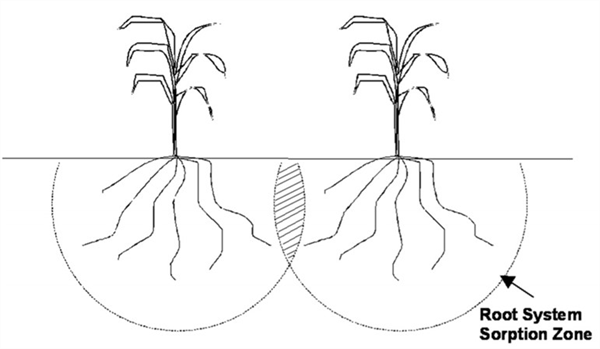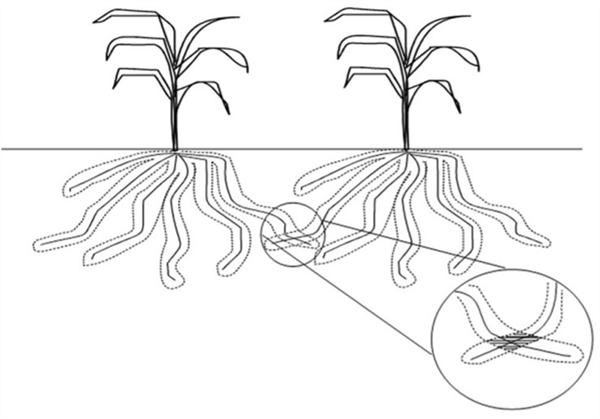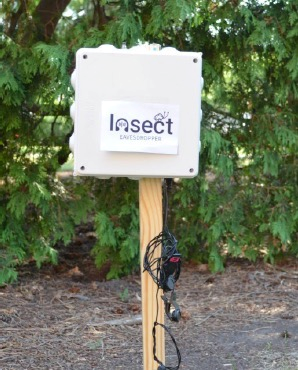
Nutrient Mobility Concept
In a recent article published in this newsletter on 27 November 2024, Volume 15, No. 24, I presented an article addressing soil health and the Bray Nutrient Mobility Concept in relation to mobile nutrients (Silvertooth, 2024). In this article, the concept of nutrient behavior in soil-plant systems focuses on the immobile plant nutrients.
Plant nutrient management is strongly dependent on nutrient mobility in the soil. Nutrient mobility in the soil is different among the essential plant nutrients and nutrient management in the field needs to take this into account.
In 1954, Dr. Roger H. Bray at the University of Illinois proposed a nutrient mobility concept that has proven to be very important in the management of nutrients for optimum efficiency (agronomically, economically, and environmentally). Bray essentially simplified all soil nutrient chemistry to the fact that some plant nutrients are mobile in the soil and some are not. (Bray, 1954; Raun, 2017; Warren et al., 2017, Havlin et al. 2014; Troeh and Thompson, 2005).
Mobile Nutrients and the Root System Sorption Zone
Mobile plant nutrients in the soil move with the soil water. Thus, plants can extract mobile nutrients from a large volume of soil beyond the direct root system. Accordingly, plants take up mobile nutrients from a “root system sorption zone” (Figure 1). This gives plants the capacity to utilize most of the mobile nutrients in the root system sorption zone as those nutrients will move to the plant roots with the soil water as it is taken up by the plant (Silvertooth, 2024).
We consider the mobile plant nutrients to be nitrogen (N), sulfur (S), boron (B), and chlorine (Cl). These mobile plant nutrients are taken up by the plant in the following forms: nitrate-nitrogen (NO3--N), sulfate-sulfur (SO42- - S), boric acid (H3BO3) and borate ions (BO33- - B), and chlorine is taken up as the chloride ion (Cl-).

Figure 1. The root system sorption zone and an illustration of the large volume of soil
from which plants extract mobile nutrients.
In a crop field where many plants are growing together, there are commonly root system sorption zones commonly overlap. Therefore, the root system sorption zones for adjoining plants are competing for water and mobile nutrients, (Figure 2). This is one of the main reasons that appropriate plant populations are important for optimum yield.

Figure 2. Competition among plants brought about by increasing yield goal.
Immobile Nutrients
Plant nutrients that are immobile in the soil include phosphorus(P), potassium (K), calcium (Ca), magnesium (Mg), iron (Fe), zinc (Zn), manganese (Mn), copper (Cu), and molybdenum (Mo). Immobile nutrients do not move as freely in the soil solution as the mobile nutrients do. These nutrients interact more directly with soil colloids and root surfaces.
Immobile nutrients are absorbed by the plant from the soil and soil solution that is directly next to the root surface. Plant roots must grow through the soil volume to come into direct contact with the immobile nutrients.
Thus, only a small volume of soil and soil solution that immediately adjacent to the root surface will be involved in providing immobile nutrients to the plant. Figure 3 describes this soil volume and plant root interface as the root surface sorption zone.

Figure 3. The root surface sorption zone and an illustration of the small volume of soil
from which plants extract immobile nutrients.
In the case of immobile nutrients, the entire soil volume is not as important as the soil colloid surfaces and soil solution next to the root surface. The concentration of immobile nutrients on the soil colloids immediately next to the root surface is a critical of the root system sorption zone.
Since only a thin layer of soil surrounding and in direct contact with the plant roots are involved in supplying immobile nutrients to the plant, there is little or no competition among plants for immobile nutrients. Competition among plants only occurs at points where roots from adjacent plants come in direct contact with one another (Figure 4).

Figure 4. Limited competition among plants for immobile nutrients.
Due to this manner of immobile nutrient behavior and interaction with plant roots, the supply or concentration of immobile nutrients such as phosphorus (P) or potassium (K), is not dependent on a yield goal. In the case of immobile nutrients, the overall soil concentration of the immobile nutrients is most important, and these nutrients are not moving readily with soil water. If the immobile nutrient supply in the soil is adequate for optimum yield of a crop, the healthy plant root system can explore new soil volume and extract the nutrient sufficiently, such as phosphorus (P) or potassium (K).
The nutrient mobility concept and these basic illustrations can help us understand the basis for some common observations and resultant crop management practices. Fertilizers with immobile plant nutrients are more effective when they are incorporated into soil and particularly in soil zones where there is a high probability of plant roots encountering the immobile nutrients.
Banded applications of immobile nutrients are generally more effective than the same rates broadcast and incorporated into the soil. In contrast, mobile nutrients like nitrogen (N) can be broadcast and moved into the root system sorption zone by water.
Soil tests for immobile nutrients do not normally change much from year to year and this is true irrespective of the crop yields from the previous season or fertilizer rate. This is because most of soil volume was not in direct contact with the plant roots. Soil concentrations of immobile nutrients do not usually change rapidly but they can be slowly mined out of the soil by a series of crops without proper fertilization.
Continued or over-applications of immobile nutrient fertilizers, such as phosphorus (P), will cause a buildup of that nutrient in the soil. This is because only a small fraction (commonly 15-20% for most crops) of the nutrient or fertilizer comes into direct contact with the plant roots. The remaining amount of fertilizer interacts with the soil.
Appropriate soil tests that are properly correlated and calibrated with crop-specific response categories are important in evaluating immobile plant nutrient status. Immobile nutrient levels in the soil are commonly expressed in terms of percent sufficiency to produce a specific crop based on appropriate soil test results.
Our goal in plant nutrition management is to achieve the highest levels of efficiency (agronomically, economically, and environmentally) in the field as possible
References:
Bray, R.H.1954. A Nutrient Mobility Concept of soil-plant relationships. Soil Sci. 78(1), p. 9-22.
Havlin, J.L., Beaton, J.D., Tisdale, S.L. and Nelson, W.L. 2014. Soil Fertility and Fertilizers; An Introduction to Nutrient Management. 6th Edition, Prentice Hall, Upper Saddle River, NJ.
Silvertooth, J.C. 2024. Soil Health - Bray’s Nutrient Mobility Concept and Mobile Plant Nutrients University of Arizona Vegetable IPM Newsletter, Volume 15, No. 24,
Raun, W.R. 2017. In: Warren et al. 2017. Oklahoma Soil Fertility Handbook, Id:E-1039
Troeh, F.R. and Thompson, L.M. (2005) Soils and Soil Fertility. Sixth Edition, Blackwell, Ames, Iowa, 489.
Warren, J., H. Zhang, B. Arnall, J. Bushong, B. Raun, C. Penn, and J. Abit. 2017. Oklahoma Soil Fertility Handbook. Id: E-1039
Weil, R.R. and Brady, N.C. (2017) The Nature and Properties of Soils. 15th Edition, Pearson, New York.
Frost and freeze damage affect countless fruit and vegetable growers leading to yield losses and occasionally the loss of the entire crop. Frost damage occurs when the temperature briefly dips below freezing (32°F).With a frost, the water within plant tissue may or may not actually freeze, depending on other conditions. A frost becomes a freeze event when ice forms within and between the cell walls of plant tissue. When this occurs, water expands and can burst cell walls. Symptoms of frost damage on vegetables include brown or blackening of plant tissues, dropping of leaves and flowers, translucent limp leaves, and cracking of the fruit. Symptoms are usually vegetable specific and vary depending on the hardiness of the crop and lowest temperature reached. A lot of times frost injury is followed by secondary infection by bacteria or opportunist fungi confusing with plant disease.
Most susceptible to frost and freezing injury: Asparagus, snap beans, Cucumbers, eggplant, lemons, lettuce, limes, okra, peppers, sweet potato
Moderately susceptible to frost and freezing injury: Broccoli, Carrots, Cauliflower, Celery, Grapefruit, Grapes, Oranges, Parsley, Radish, Spinach, Squash
Least susceptible to frost and freezing injury: Brussels sprouts, Cabbage, Dates, Kale, Kohlrabi, Parsnips, Turnips, Beets
More information:
Vegetable season is well underway and early planted vegetable crops are already about one month old. Many fields have or soon will need to be cultivated. As such, I thought it would be timely to “repost” this video on “new” technologies for cultivating weeds - 1) a camera-guided side-shift hitch and 2) finger weeders, an in-row weeding tool (Fig. 1). The video shows the device operating in seedling corn, but it will work similarly in other crops such as broccoli or cauliflower.
We have found the devices work well. Trials conducted in cotton over 3 years showed that use of camera-guidance improved weed control by more than 30% and finger weeders removed about 45% of the in-row weeds. Weed control using the two technologies together simultaneously was roughly 90% for broadleaf weeds and about 85% for all weed species including grasses.
If you are interested in trying these technologies, please contact me. We still have the equipment and I’d be happy to work with you.

Fig. 1. Technologies for precision cultivation and in-row weeding include a) a
camera-guided side-shift hitch attached to a cultivator and b) in-row weeding
tools (finger weeders).
Watch the Video Below
In a letter from the EPA to AMVAC dated May 2, 2024 that you can find by clicking here: https://www.regulations.gov/document/EPA-HQ-OPP-2011-0374-0116 EPA "thanks AMVAC for voluntarily proposing to discontinue DCPA use on onions".
If DCPA is not available next season our options for onion weed control are reduced. Please read the work from Carl Bell https://escholarship.org/content/qt91w4d06x/qt91w4d06x.pdf?t=lnryxp&v=lg regarding combining bensulide and pendimethalin for weeds control in onions. He did this research due to a similar situation with Dacthal in 1996.
We tested last season 2 qts of Prefar and 0.5 pt of Prowl and the weed control looked promising. There appears to be a synergystic effect between these products. Some phytotoxicity was observed and stand was affected. Bell reported (2001) that "a reduced crop stand does not always equal a reduced yield, since onions compensate to some extent by producing larger bulbs".
Some PCAs are planning IPM strategies and are suggesting for green onions: "Apply Goal early post emergence with clethodim if you have grasses then Prowl at layby".
What do you think? keep sending your comments to the Veg IPM Team and let us know what you think.

Researchers at the University of Wisconsin-Madison have developed a device called “Insect Eavesdropper” that allows real-time detection of insect pests attacking crops. The Insect Eavesdropper is equipped with highly sensitive contact microphones which allow it to capture the sounds of insects eating and moving inside plants. The researchers claimed that by eavesdropping on the sounds within the plants, one can gain insights into insect presence, insect density, insect interaction with the crops, insect feeding behaviors, etc. The device works by clipping a sensor onto plants in the field while the data is monitored remotely to determine when pests are active and where they are concentrated. According to the inventors, by using advanced algorithms, the device can accurately identify the type of pest present, even before visual signs of infestation become apparent.
If this device works as described, it would be a very useful tool for pest monitoring. I you would like to read more about the Insect Eavesdropper technology click on this link.

Results of pheromone and sticky trap catches can be viewed here.
Corn earworm: CEW moth counts remain at low levels in all areas, well below average for this time of year.
Beet armyworm: Trap increased areawide; above average compared to previous years.
Cabbage looper: Cabbage looper counts decreased in all areas; below average for this time of season.
Diamondback moth: DBM moth counts decreased in most areas. About average for this time of the year.
Whitefly: Adult movement beginning at low levels, average for early spring.
Thrips: Thrips adult counts reached their peak for the season. Above average compared with previous years.
Aphids: Aphid movement decreased in all areas; below average for late-March.
Leafminers: Adults remain low in most locations, below average for March.